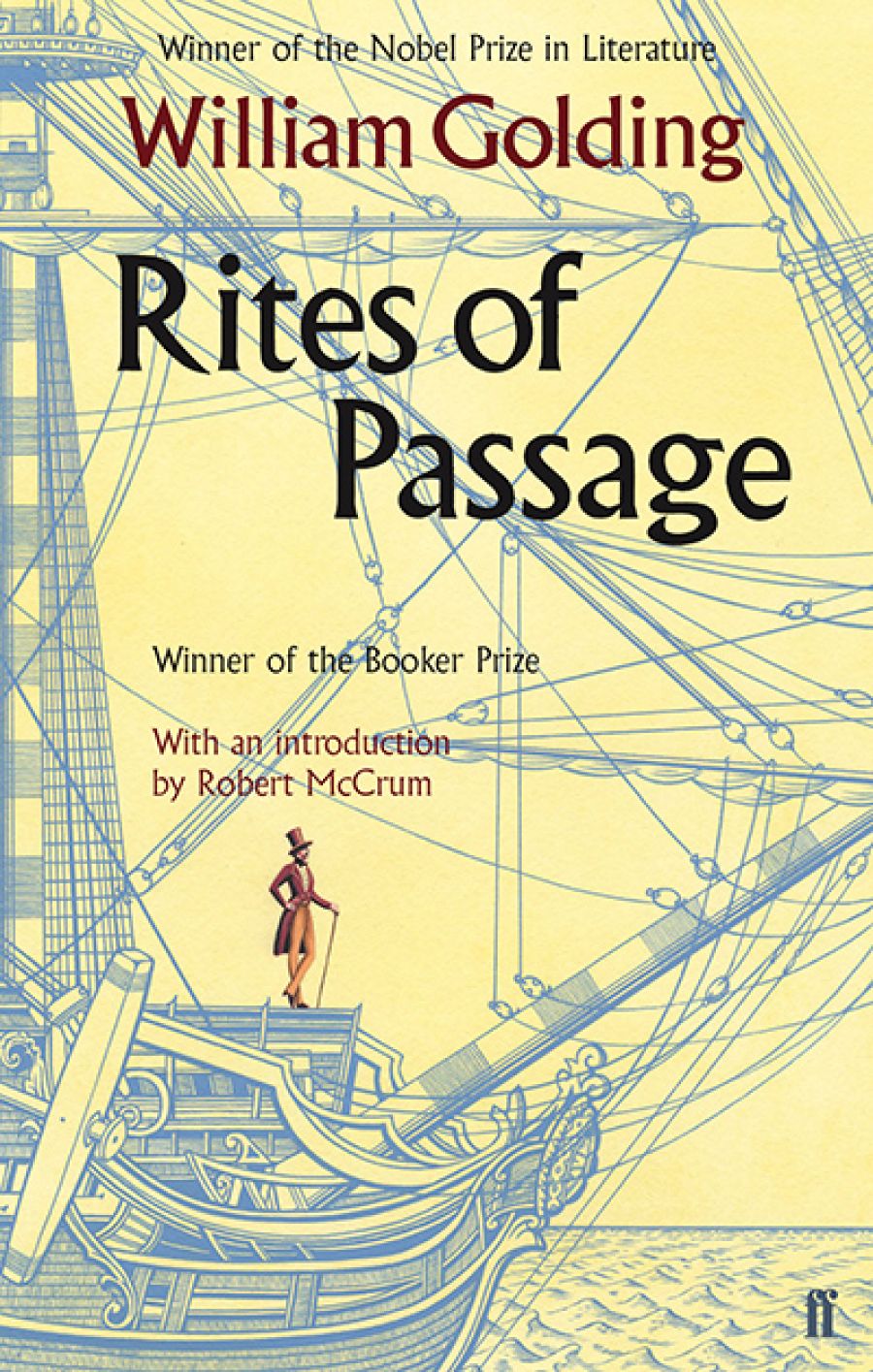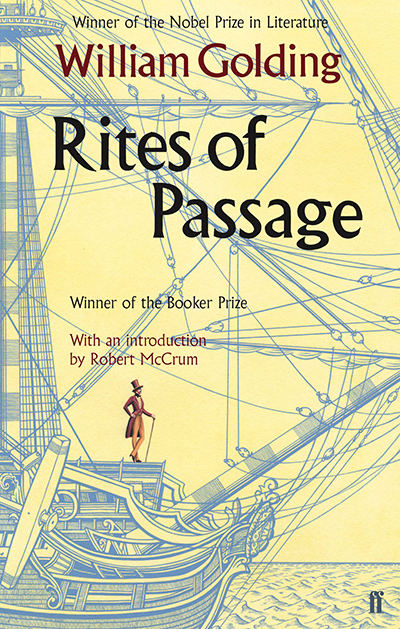
- Free Article: No
- Contents Category: History
- Review Article: Yes
- Article Title: Adventure and the Antipodes
- Online Only: No
- Custom Highlight Text:
Rites of Passage qualifies for a notice in ABR because, although it is written and published in Britain, it is among other things an account of the adventures of one Edmund Talbot who has taken a passage to Australia sometime during a lull in the wars with France, towards the end of the eighteenth century.
- Book 1 Title: Rites of Passage
- Book 1 Biblio: Faber & Faber, $14.95 pb, 278 pp
- Book 1 Cover Small (400 x 600):

- Book 1 Cover (800 x 1200):

Edmund Talbot is travelling to Sydney to take up a government post, and he has decided to keep a journal for the edification of his influential godfather and patron. We are reading his journal. It is, as the diarist himself coyly admits towards the end, ‘perfect Richardson’; even the book design echoes eighteenth century practice in typeface, border design, and the experimental use of typography reminiscent of Tristram Shandy.
But the resemblance goes further than that. Golding has a good sense of the preoccupations and techniques of the eighteenth century journal. Much fun is had, for example, with nautical terms which are winched up out of their context, peered at anxiously and allowed to float off into the reader’s consciousness as young Talbot gets his sea legs. All very reminiscent of Gulliver!
And Talbot is very young. What he fails to perceive, in spite of the fact that he’s the narrator, is just as .engaging as what he thinks he perceives. The reader must come to terms with not only the diarist’s natural circumspection, hut the layers of politeness, reticence and allusiveness in the very society being described. And because Talbot makes it clear to his enemies on board that he’s keeping a journal, the journal itself takes on an independent life, becomes one character to be reckoned with in the pattern of events.
The one or two actually significant events in the novel (which have a lot to do with passages!), again true to the genre, are when the narrative camouflage is torn away, as ribald and farcical as any fan of Tom Jones could hope for. They concern a young priest whose attempts to get on side with the parson-hating captain, together with his fata! attraction for a young sailor, lead to his downfall!
The rites of passage are literally the celebrations held as the ship crosses the equator, but metaphorically are of course the experiences suffered by the Parson and Talbot as they severally discover the true nature of human society. In the middle of all the Discoveries, Reversals, Glances, Confusions, Assignations, and thumpings and bumpings of the human at play, lie one or two mildly sobering truths.
Here is another reason why ABR should notice this novel. The ‘rite of passage’, the shift from one state to another – youth to age, innocence to experience – is very much suggested, and has been ever since Cook, by the larger metaphor inherent in the relationship between Australia and the Old World. Of course it must be a voyage, and of course it must be to the land down under, the society conceived of then, as now, as a kind of inverted image of all that’s known.


Comments powered by CComment